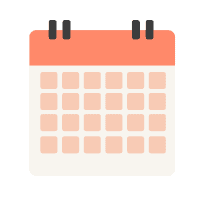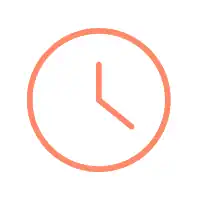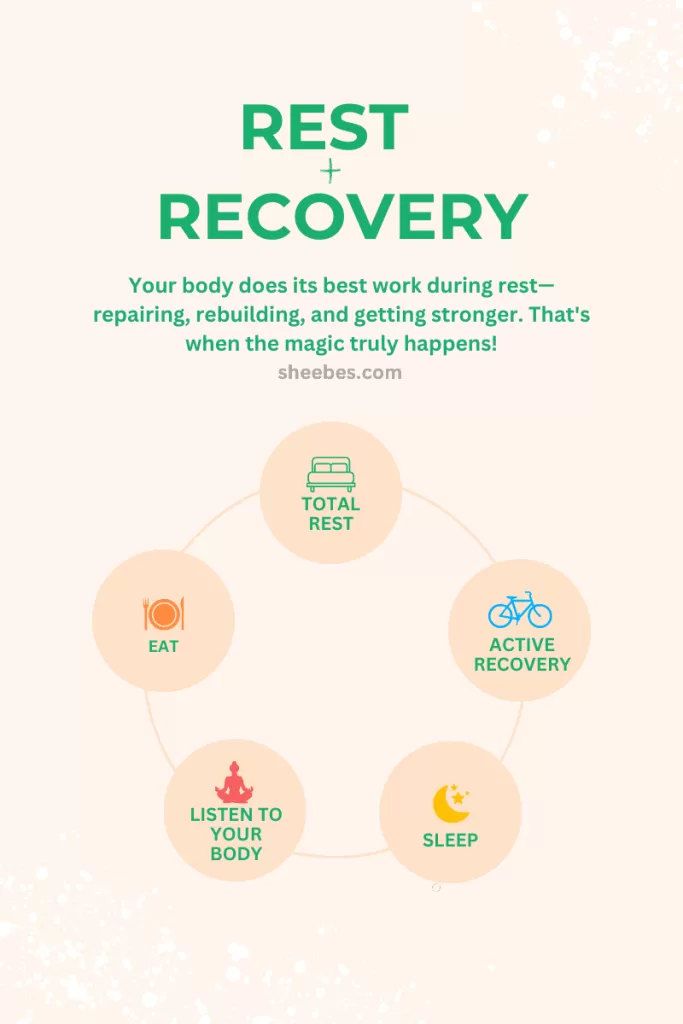Bike? ✅
Helmet? ✅
Bike shorts? ✅
…aaannnd you’re ready to roll.
(But if you’re looking for a foolproof way to get started, my 4-Week Beginner Cycling Training Plan breaks down everything into bite-sized, doable steps. No guesswork involved.)
You get onto your bike and then it hits.
This first ride might not feel like smooth sailing AT ALL.
More like, ‘I’m failing so badly at this’ moments.
‘Why didn’t I just go for a run?’ (ps. I’ve got running advice too.)
I get it—I’ve been there. We all have that wobbly start but stick with it. I pinky promise it’ll all click.
Building a cycling plan for beginners that sticks starts with small steps and finding your rhythm.
So if you’re new to the saddle, let’s talk about building a cycling plan that works.
💡 Quick tip: Add a few beginner cycling essentials
If you’re new to cycling, here’s a quick rundown:
- Helmet: Always wear one! Safety first.
- Bike shorts: For comfort—trust me, your butt will thank you.
- Water bottle: Stay hydrated; don’t underestimate how much you’ll sweat.
Why a cycling plan is your reliable safety net
…get on your bike and just go…easy, right?
But what happens when you get pulled in a million other more tempting directions?
Squid Games isn’t going to watch itself.
But that cycling plan I talked about earlier? It’ll keep you on track no matter what.
📍 Not sure where to begin? Think of this plan as your personal roadmap. It’s like having a coach in your pocket…minus the intimidation. Designed to keep you moving, even when Netflix is calling.
Without it? You’ll end up frustrated by the lack of results.
The good news? This doesn’t need to be rigid or complicated.
Small, consistent steps are all it takes—and the best part? You can make it fit your life.
Before you know it, skipping a ride—or any kind of movement—will feel like something’s missing from your day.
💡Bike fit check quick tips
- Adjust your seat height so your leg has a slight bend at the lowest pedal point.
- Check your handlebars to make sure they feel comfortable—not too stretched or cramped.
- Visit a local bike shop for a quick fit adjustment if anything feels off.
Need more bike fit details? Check out my full guide on ➡️ how to fit a road bike.
step 1: What can you fit into your life right now?

We tend to start with big goals and the **sweeps everything off the calendar** mindset.
But tbh, that’s kind of a big leap when riding your bike isn’t already part of your day-to-day.
So let’s tackle it from a different angle:
What can you fit into your schedule right now?
Want a plan that fits your life? My 4-Week Beginner Cycling Training Plan isn’t about overhauling your entire schedule. It’s about finding those perfect 10-20-minute windows that work for you. 🎯
💡Quick tip: Start small, keep it doable
Think about just squeezing in 10 minutes here and there.
It’s not about having the perfect cycling workout; it’s about fitting something in without stressing over it.
Your goal? Consistency > perfection.
p.s. Want more tips that go straight to your inbox? Sign up for my newsletter here 👉🏼 SIGN ME UP!
Step 2: Let’s keep it simple with short rides

Got that schedule figured out?
Next, let’s keep it simple with 2-3 short cycling workouts for beginners a week for 20-30 minutes—nothing too long or intense.
Want a done-for-you-plan? My ✨4-Week Beginner Cycling Training Plan✨ gives you a structured roadmap so you can focus on riding, not guessing.
Not quite ready for a full plan? I’ve still got you with cycling tips delivered to your inbox 👉🏼 SIGN ME UP!
We want to ease into it. Why?
Because it’s really about…
➡️ Making time for your workouts as part of your week
➡️ Getting used to riding your bike.
Think this sounds too easy?
Here’s the truth: That ride?
It’s a marginal gain – tiny, almost invisible improvements that add up and make a big impact over time.
The British cycling team built their success on this concept – focusing on improving by just 1% daily.
You’re not going all out but you’re still building endurance.
Every time you ride, your:
✅ Heart gets stronger
✅ Your legs adapt
✅ You learn to keep going.
That’s a marginal gain.
It’s these consistent efforts – like squeezing in 20 minutes – that quietly build endurance, making each next workout a little easier, a little stronger.
Step 3: Take a breather because rest days matter too

Logging miles is great…but the real kicker?
Progress isn’t about how long or hard your ride is. It’s about what happens after.
Here’s where you have a choice: push yourself hard again the next day OR take a breather? 🤔
Hint: Take the downtime. ✨
This isn’t just a time-out—it’s where the real magic happens.
When you push hard, your muscles experience tiny tears that need time to heal.
That’s how you get stronger, prevent injuries, and actually feel good on your next ride.
So let’s talk about how to recover like you mean it:
➡️ Don’t slam the brakes once you’re done with your cycling workout.
Try some gentle spinning for about 5 minutes to help your heart rate settle and let your body shift into recovery mode.
➡️ Within 30-60 minutes of your workout, drink water or an electrolyte-rich drink.
Then eat a solid meal packed with protein, carbs, and healthy fats. It’ll jumpstart muscle repair and recharge your energy.
➡️ Got heavy, tired legs? You may have to tweak your cycling plan—total rest or maybe keep things a little easier.
Go from newbie ➡️ confident cyclist with my ✨4-Week Beginner Cycling Training Plan✨.
So what exactly will you get?
✅ Instant access to this 22-page PDF download.
✅ You’ll ride your bike 3️⃣ days a week. The goal? It’s to get you on your bike regularly, with no guesswork.
✅ Cycling isn’t just about your legs—your whole body’s got to be in on it. That’s why this plan includes easy strength moves 💪🏽 you can do at home, helping you ride longer, tackle future hills, and keep injuries away—no gym needed.
✅ Motivation tips for when it dips. ⤵️ We’ve all been there—motivation takes off for a bit. But I’m sharing some down-to-earth motivation tips to keep you moving, even when you’d rather skip the ride.
✅ Get ready with a pre-ride checklist, so you can head out the door worry-free.
✅ And, a beginner-friendly gear guide ⚙️ with all the affordable must-haves.